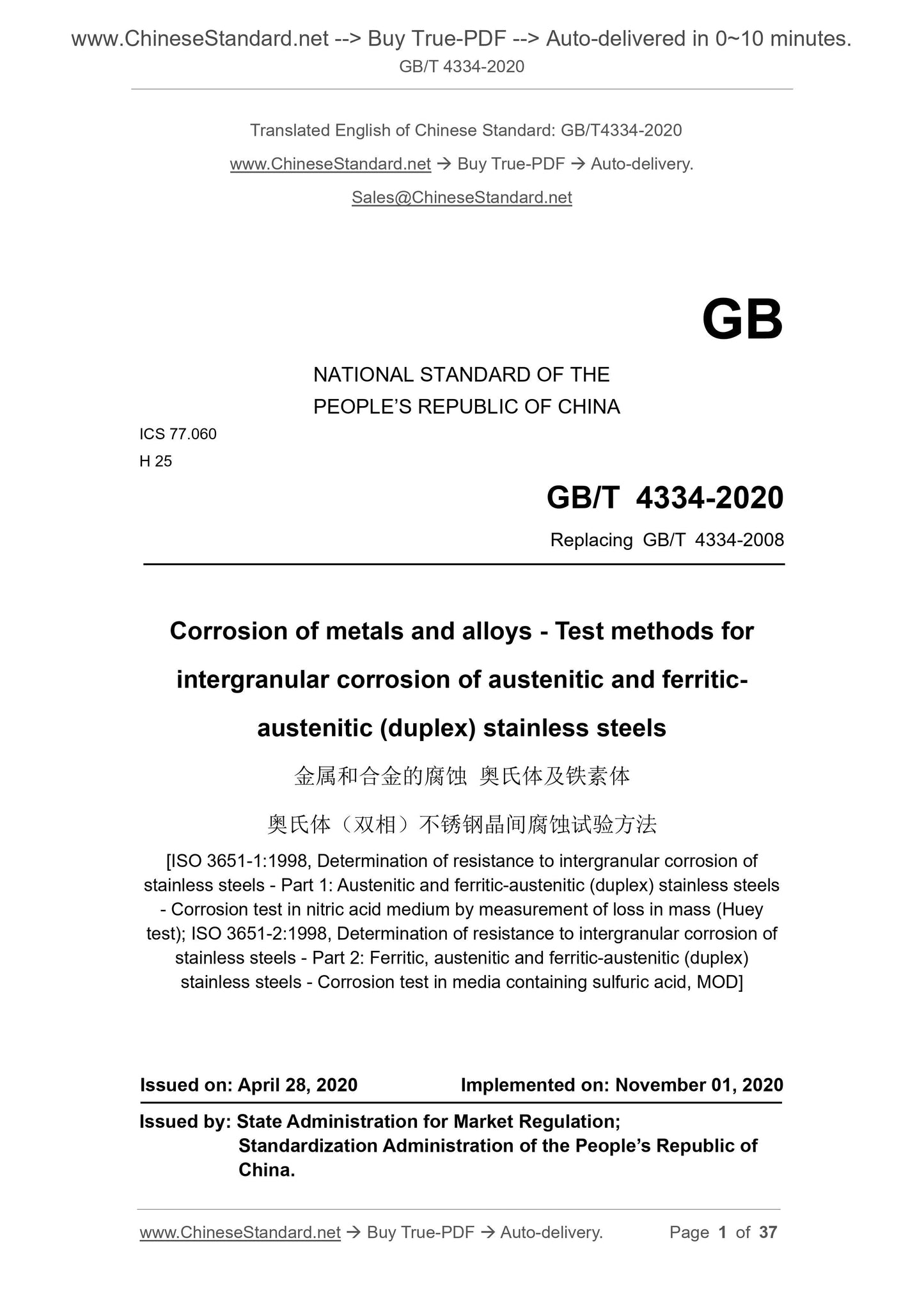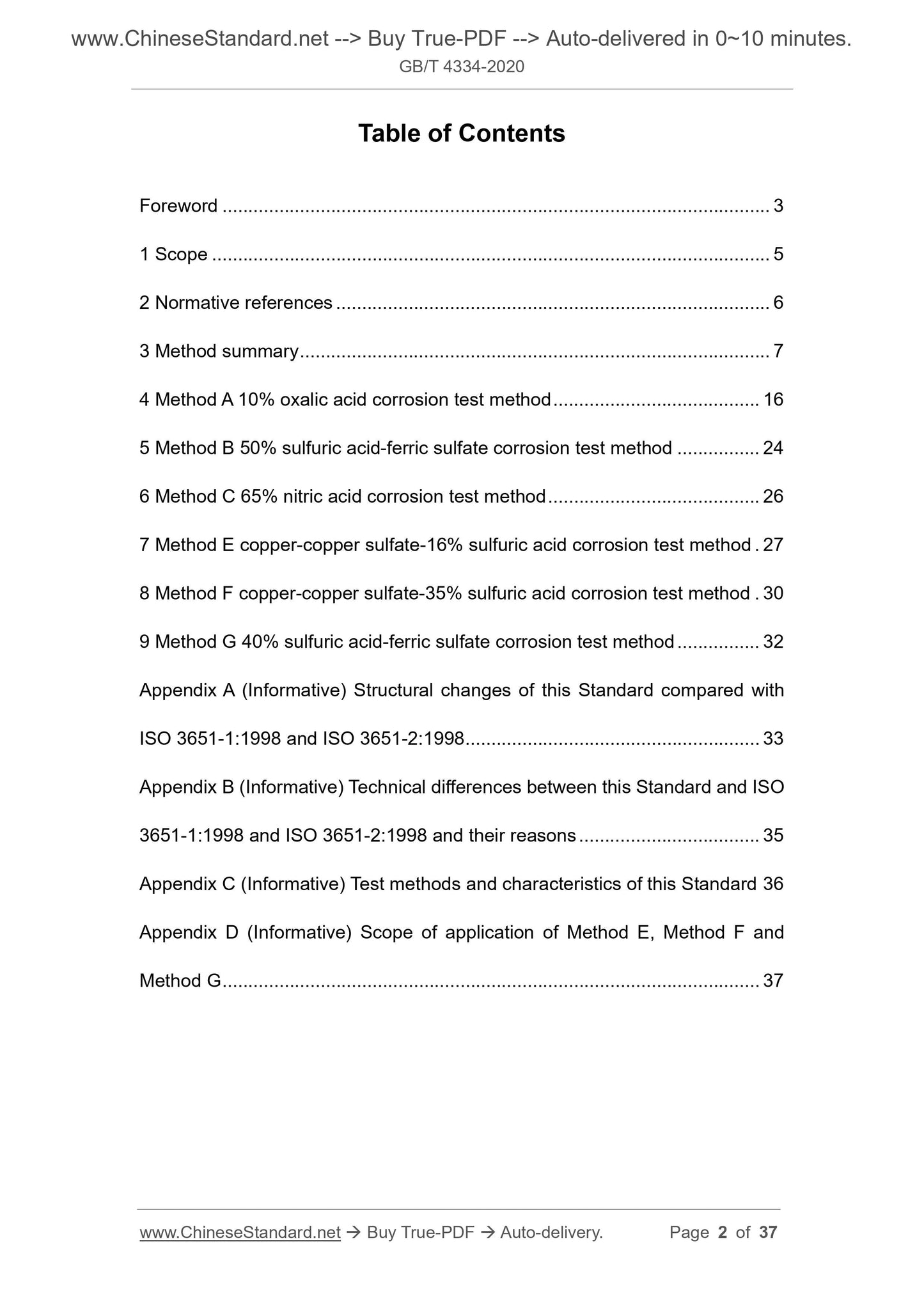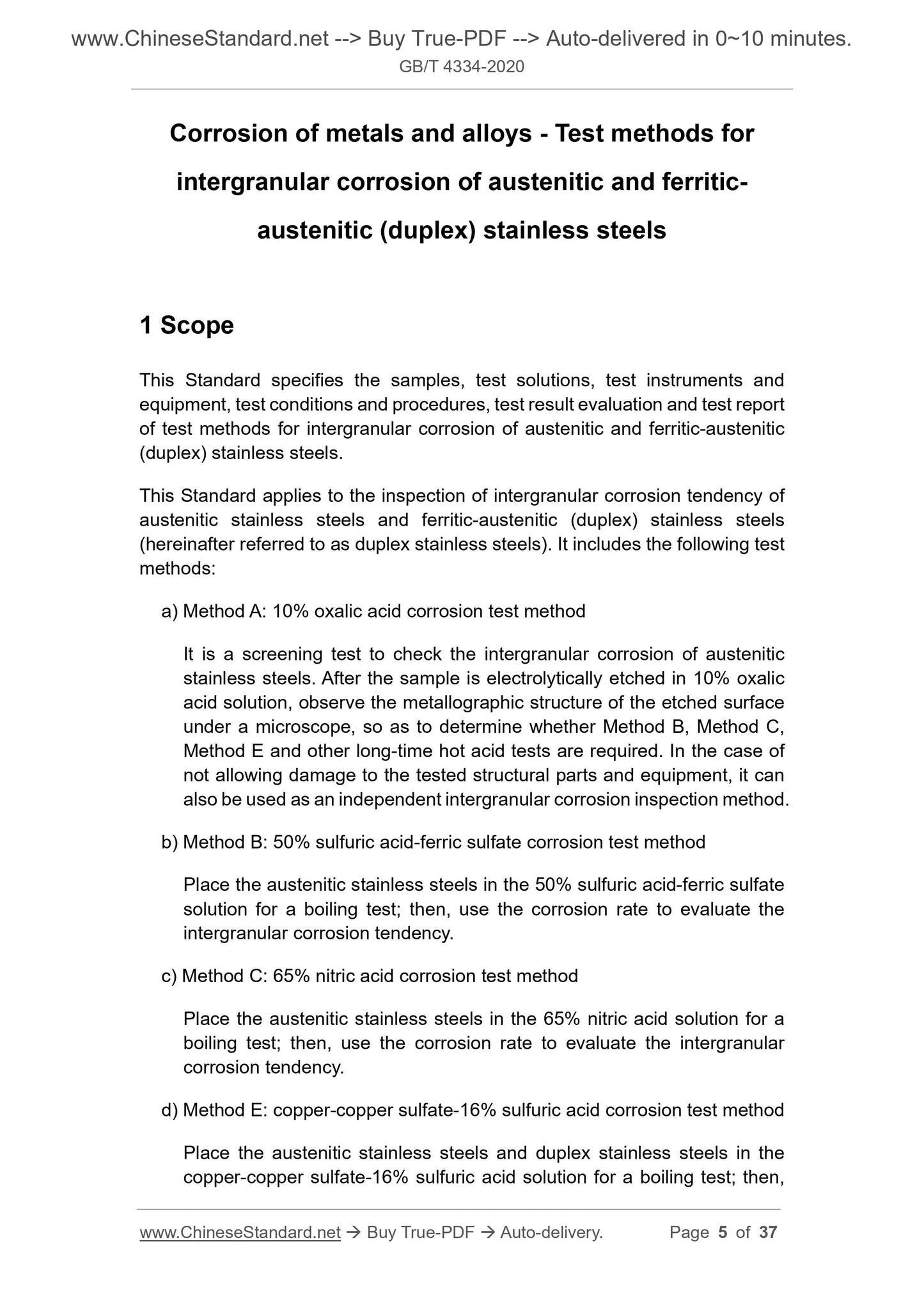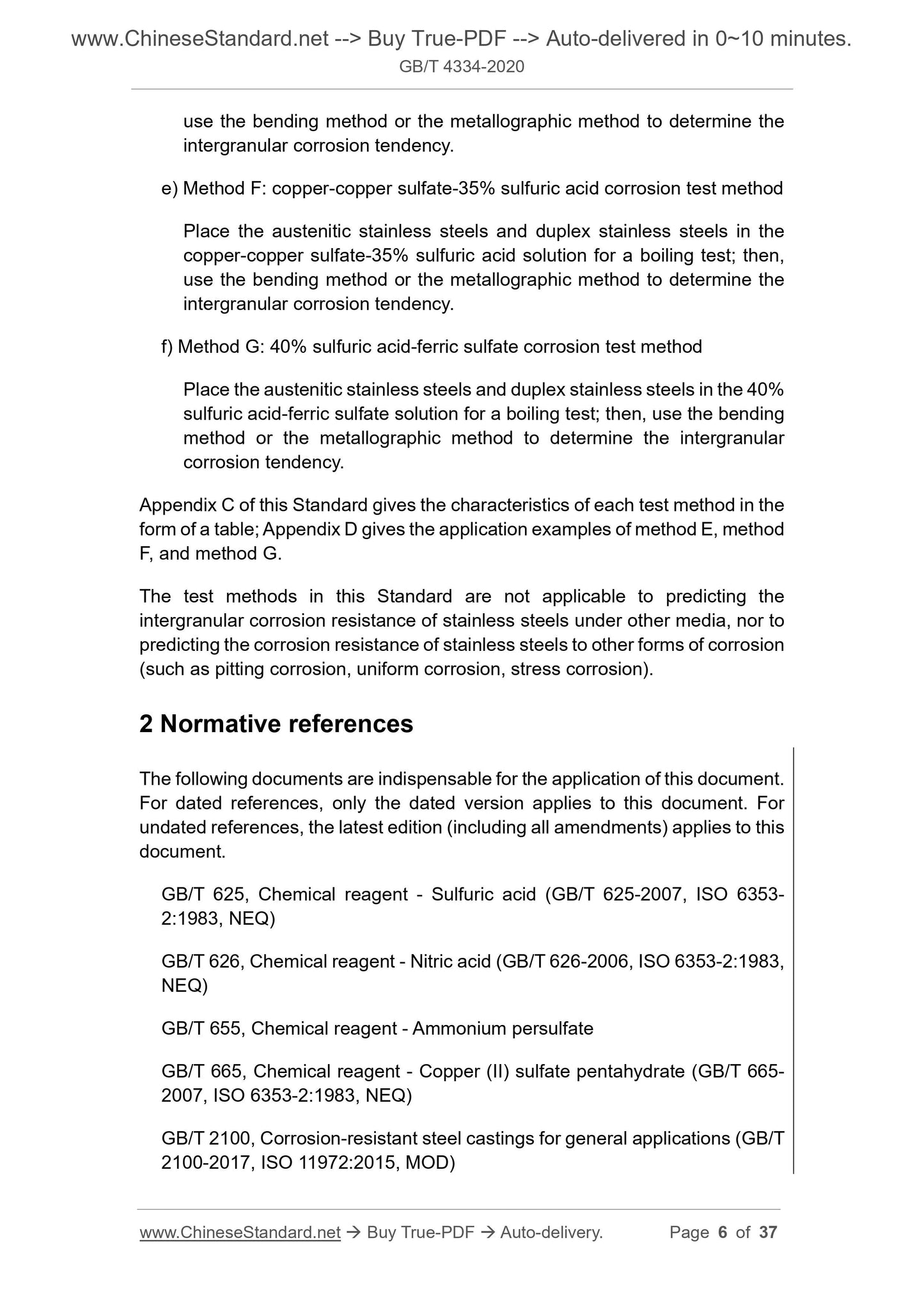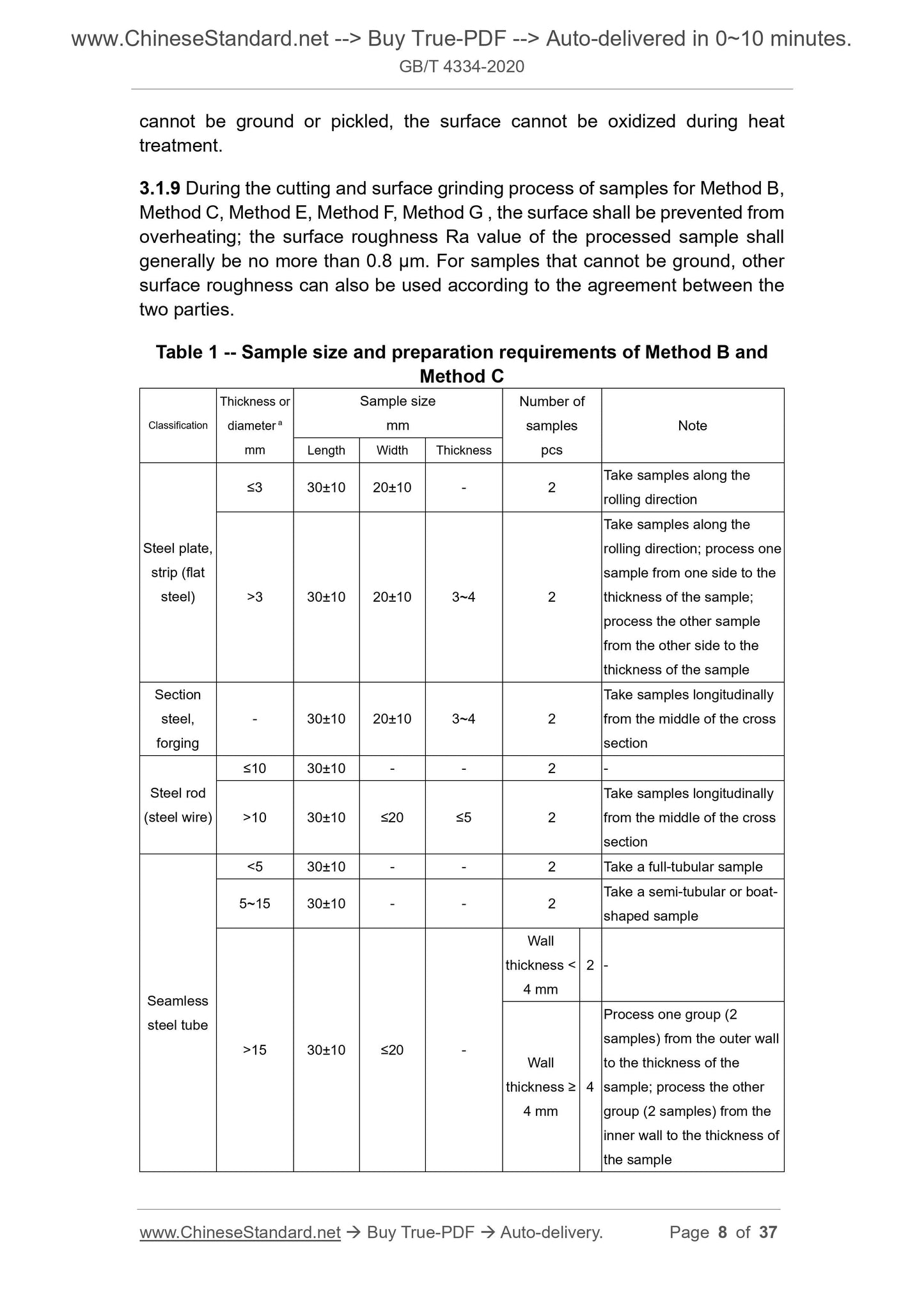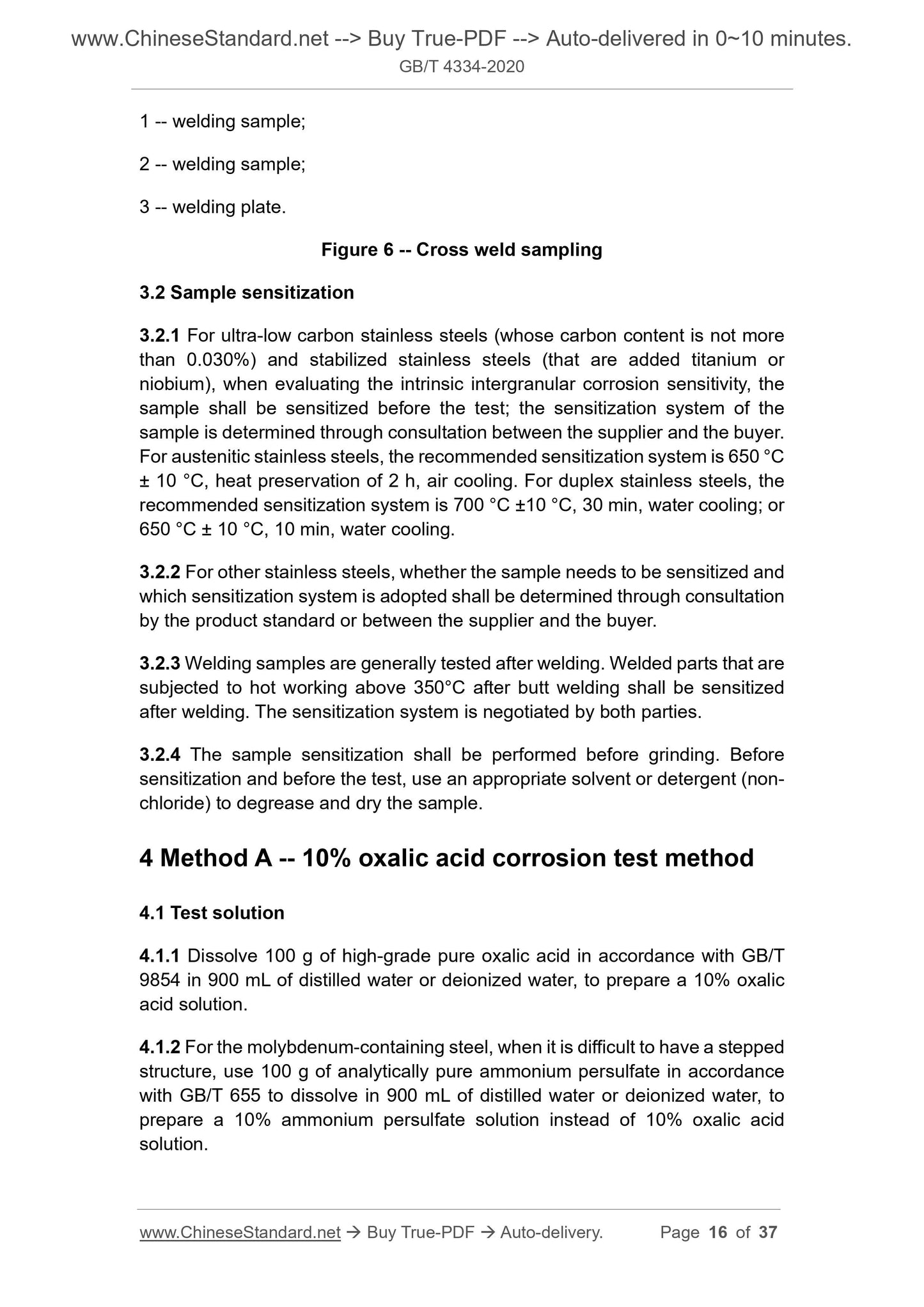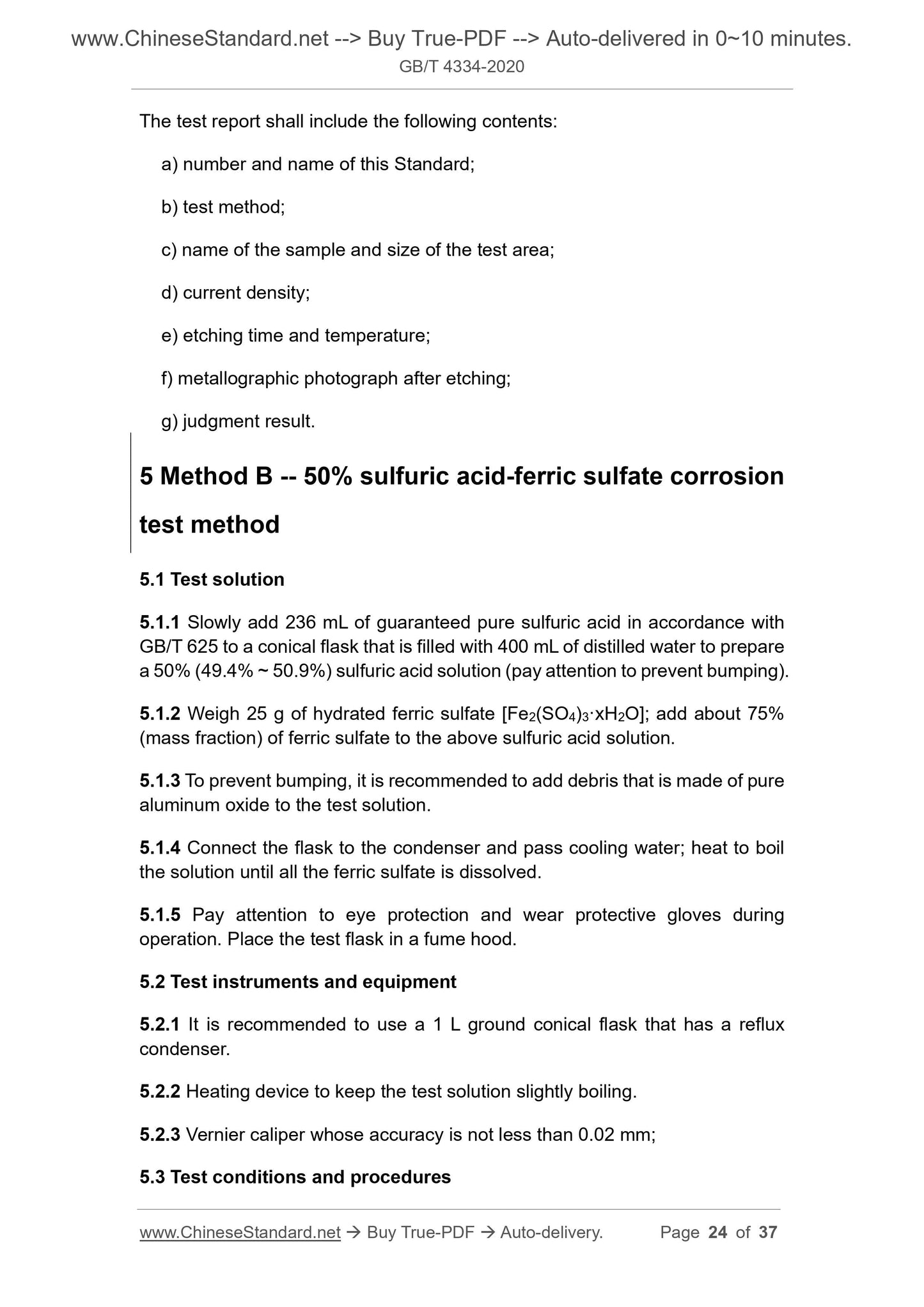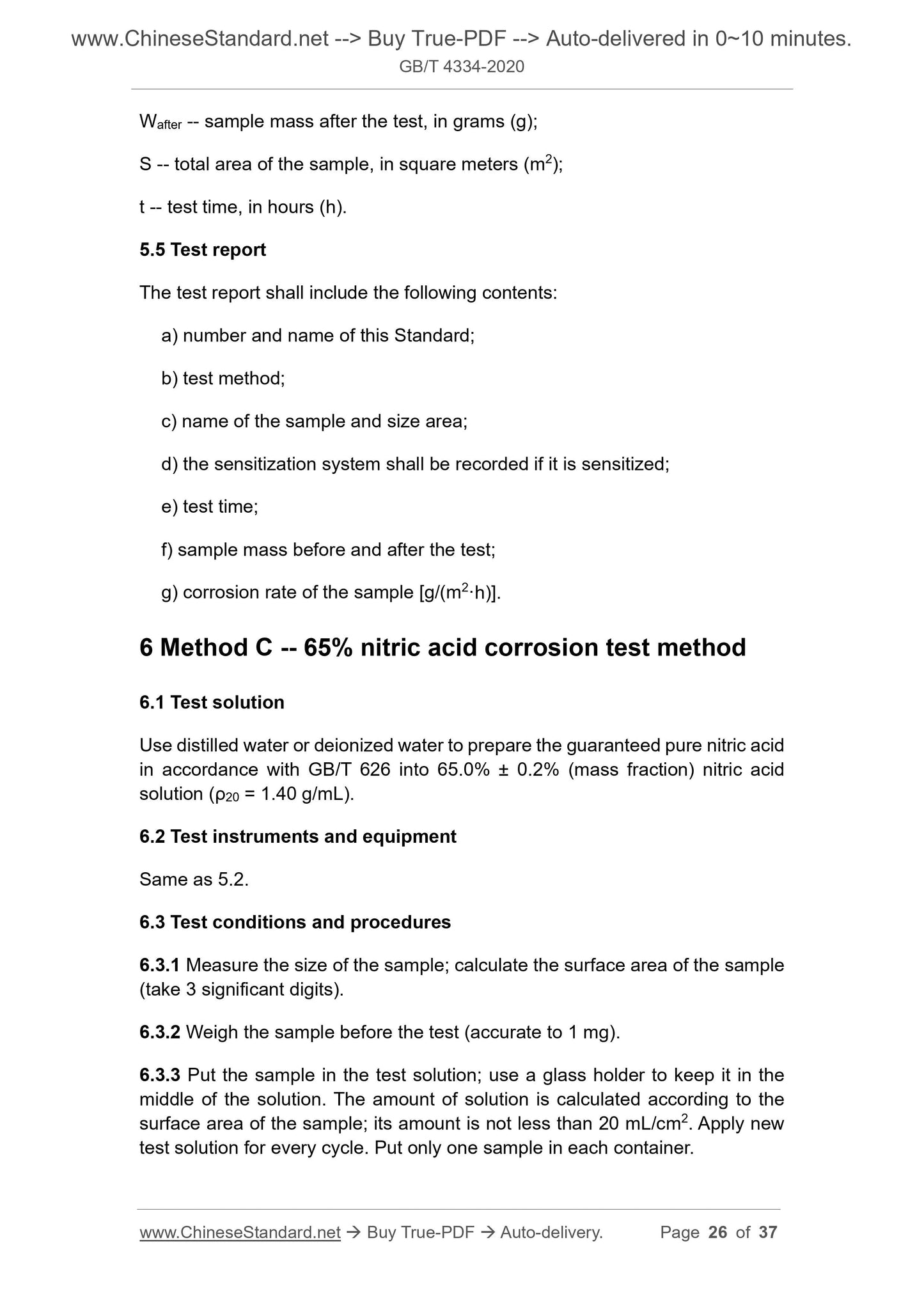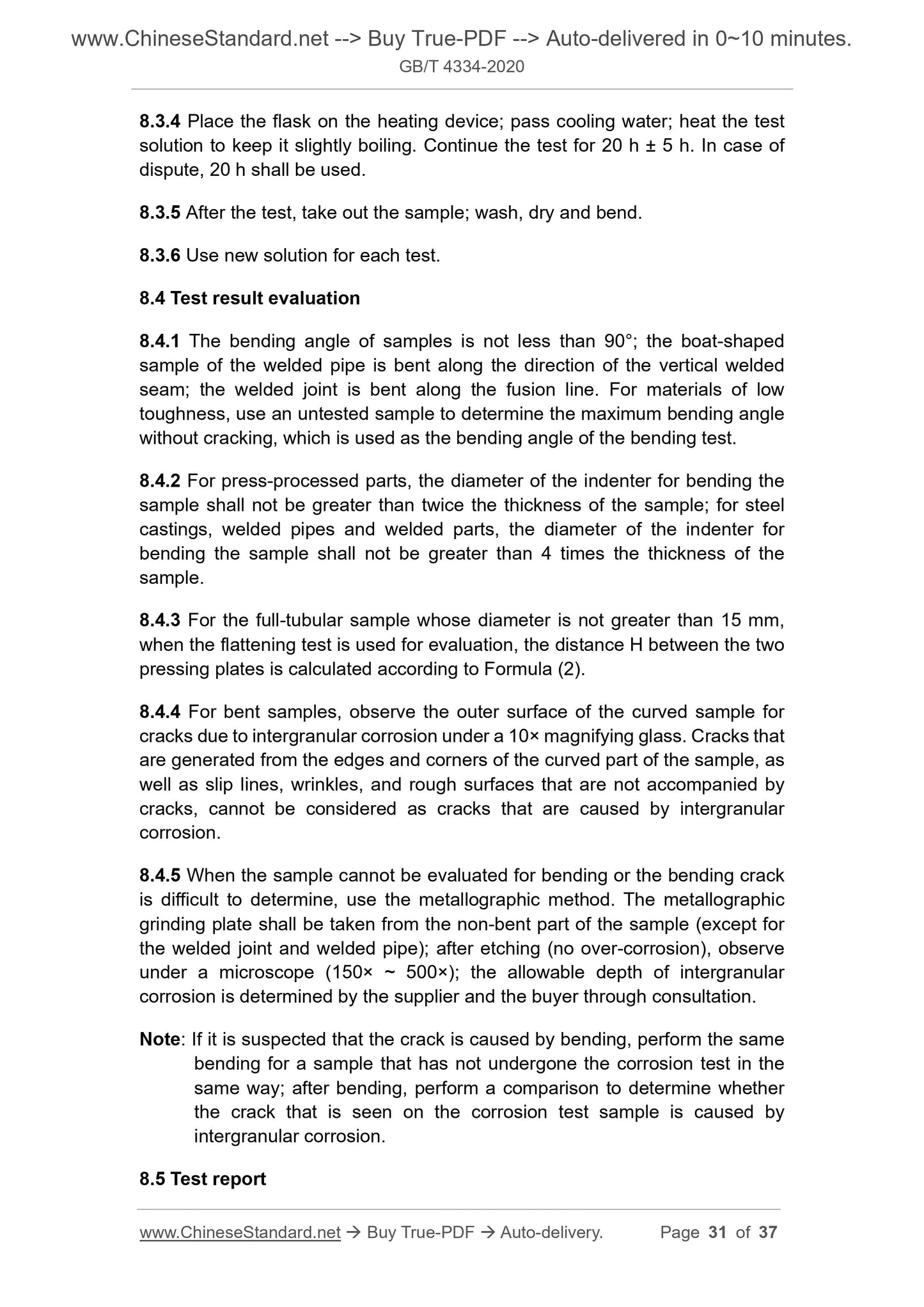1
/
of
9
www.ChineseStandard.us -- Field Test Asia Pte. Ltd.
GB/T 4334-2020 English PDF (GB/T4334-2020)
GB/T 4334-2020 English PDF (GB/T4334-2020)
Regular price
$355.00
Regular price
Sale price
$355.00
Unit price
/
per
Shipping calculated at checkout.
Couldn't load pickup availability
GB/T 4334-2020: Corrosion of metals and alloys - Test methods for intergranular corrosion of austenitic and ferritic-austenitic (duplex) stainless steels
Delivery: 9 seconds. Download (and Email) true-PDF + Invoice.Get Quotation: Click GB/T 4334-2020 (Self-service in 1-minute)
Newer / historical versions: GB/T 4334-2020
Preview True-PDF
Scope
This Standard specifies the samples, test solutions, test instruments andequipment, test conditions and procedures, test result evaluation and test report
of test methods for intergranular corrosion of austenitic and ferritic-austenitic
(duplex) stainless steels.
This Standard applies to the inspection of intergranular corrosion tendency of
austenitic stainless steels and ferritic-austenitic (duplex) stainless steels
(hereinafter referred to as duplex stainless steels). It includes the following test
methods:
a) Method A: 10% oxalic acid corrosion test method
It is a screening test to check the intergranular corrosion of austenitic
stainless steels. After the sample is electrolytically etched in 10% oxalic
acid solution, observe the metallographic structure of the etched surface
under a microscope, so as to determine whether Method B, Method C,
Method E and other long-time hot acid tests are required. In the case of
not allowing damage to the tested structural parts and equipment, it can
also be used as an independent intergranular corrosion inspection method.
b) Method B: 50% sulfuric acid-ferric sulfate corrosion test method
Place the austenitic stainless steels in the 50% sulfuric acid-ferric sulfate
solution for a boiling test; then, use the corrosion rate to evaluate the
intergranular corrosion tendency.
c) Method C: 65% nitric acid corrosion test method
Place the austenitic stainless steels in the 65% nitric acid solution for a
boiling test; then, use the corrosion rate to evaluate the intergranular
corrosion tendency.
d) Method E: copper-copper sulfate-16% sulfuric acid corrosion test method
Place the austenitic stainless steels and duplex stainless steels in the
copper-copper sulfate-16% sulfuric acid solution for a boiling test; then,
use the bending method or the metallographic method to determine the
intergranular corrosion tendency.
e) Method F: copper-copper sulfate-35% sulfuric acid corrosion test method
Place the austenitic stainless steels and duplex stainless steels in the
copper-copper sulfate-35% sulfuric acid solution for a boiling test; then,
use the bending method or the metallographic method to determine the
intergranular corrosion tendency.
f) Method G: 40% sulfuric acid-ferric sulfate corrosion test method
Place the austenitic stainless steels and duplex stainless steels in the 40%
sulfuric acid-ferric sulfate solution for a boiling test; then, use the bending
method or the metallographic method to determine the intergranular
corrosion tendency.
Appendix C of this Standard gives the characteristics of each test method in the
form of a table; Appendix D gives the application examples of method E, method
F, and method G.
The test methods in this Standard are not applicable to predicting the
intergranular corrosion resistance of stainless steels under other media, nor to
predicting the corrosion resistance of stainless steels to other forms of corrosion
(such as pitting corrosion, uniform corrosion, stress corrosion).
Basic Data
| Standard ID | GB/T 4334-2020 (GB/T4334-2020) |
| Description (Translated English) | Corrosion of metals and alloys - Test methods for intergranular corrosion of austenitic and ferritic-austenitic (duplex) stainless steels |
| Sector / Industry | National Standard (Recommended) |
| Classification of Chinese Standard | H25 |
| Classification of International Standard | 77.060 |
| Word Count Estimation | 26,244 |
| Date of Issue | 2020-04-28 |
| Date of Implementation | 2020-11-01 |
| Issuing agency(ies) | State Administration for Market Regulation, China National Standardization Administration |
Share
